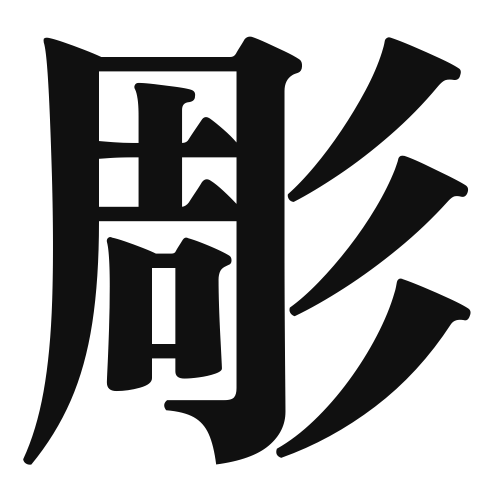1. Overview of Meaning
The kanji “彫” (chō) primarily means “to carve” or “to engrave.” It is often associated with the art of sculpting or creating detailed designs on various materials such as wood, stone, or metal.
2. Formation and Radical
Formation of the Kanji: The kanji “彫” is classified as a 形声文字 (phonetic-ideographic character), which means it combines a meaning component with a phonetic component. The left side, “彡,” suggests something related to lines or patterns, while the right side, “彫,” indicates the sound.
Radical: The radical for “彫” is “彡,” which is often associated with decorative or artistic elements.
3. Examples of Usage
Common Words and Phrases: Some frequently used words that include “彫” are:
- 彫刻 (ちょうこく, chōkoku) – sculpture
- 彫り物 (ほりもの, horimono) – carving
Example Sentences in Daily Conversation:
- この彫刻はとても美しいです。 (このちょうこくはとてもびじゅつです。) – This sculpture is very beautiful.
- 彼は木を彫るのが得意です。 (かれはきをほるのがとくいです。) – He is good at carving wood.
4. Synonyms and Antonyms
Similar Kanji: A similar kanji is “刻” (こく, koku), which also means “to carve” but often refers to more precise or detailed engraving, such as in watchmaking.
Antonyms: An antonym for “彫” could be “埋” (うめる, umeru), which means “to bury,” indicating the opposite action of covering or hiding something rather than revealing it through carving.
5. Cultural and Historical Background
Relation to Japanese Culture: The art of carving and engraving has a long history in Japan, with traditional crafts such as woodblock printing and intricate wood carvings being highly valued.
Proverbs and Idioms: One relevant proverb is “彫りが深い” (ほりがふかい, hori ga fukai), which means “to have deep carvings,” often used metaphorically to describe someone with profound thoughts or insights.
